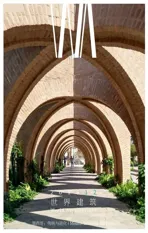冈萨雷斯卢纳大厦,瓜达拉哈拉,哈利斯科,墨西哥
2019-12-24建筑设计马西亚斯佩雷多工作室
建筑设计:马西亚斯-佩雷多工作室

1 外景/Exterior view

2 透视图/Perspective diagram
该公寓楼位于瓜达拉哈拉市的一个遗产保护区内,区域内的建筑主要为1950 年代的现代风格。项目在区域中插入了新的体量,通过低矮的内墙和底部附有花坛、镂空的栅栏,引导空间向建筑物前方的花园渗透。
该区域有着斜向的网状肌理,和城市的正交路网不相平行。人们曾希望能打破文艺复兴时期呆板的规划,因而形成了这些三角形或梯形的街区。鉴于此,场地有了两个重要的立面:其一朝向一条幽静的小路,而另一个朝向一条大道,从工业区一直通往城市的西部。于是,建筑的主入口就设置在第一个立面之下;另一个立面借助主干道的人流,设置了沿街商铺。
整个综合体呈现为一个切削后的单一体量,占据了整个梯形场地。在体量操作之后,4 个立面均可获得自然光和自然通风。相邻的体量语汇之间有着微妙的异构差别,但都暗示着同一个整体。同时,建筑的双层立面也蕴含着材料的坚硬属性。两者之间的空隙变成露台,成为室内空间与外部严酷的阳光之间的屏障。
最终的体量解决方案,是将住宅分布在4 个塔楼之中,加上两个独立的交通筒,避免使用传统走廊。尽管建筑占满了整个地段,但为了减轻体积感,体量被部分削减,弱化了外向的姿态,使之更为融入周边的环境。塔楼的体量也被切分,以保证每间公寓的通风和自然采光,并创造更多的公共区域和宜人的屋顶平台。□(王一桥 译)
This apartment building is located in a patrimonial protected area, conformed by modern era style houses from the 1950s in Guadalajara. This insertion allows permeability towards the gardens situated in front of the building. This gesture is reproduced by the building's low interior walls,and permeable fences on its perimeter that hold a gardened base.
The complex is placed within the site as an excavated monolith, being an extrusion of the plot's trapezoidal geometry. As a stereotomic exercise it allows the building to have natural ventilation and lighting across all four façades. The solid volume recognises the immediate neighbours through a subtle and heterogeneous language, permitting the total integration of the building. The hard language of the materials is exploited to generate dual façades.The resulting voids turn into terraces, becoming the protective barrier between the interior space and the exterior bustle and harsh sunlight.
The solution to the monolith is given by distributing the dwelling in four different towers,attended by two independent circulation cores,rejecting conventional hallways. Even though the building takes the entire square footage of the plot,to lighten this large mass, the volume is excavated,looking to provoke a less harsh aspect within the context. The towers are interrupted to permit ventilation and natural lighting for all the units, to create more common areas, and livable rooftops.□
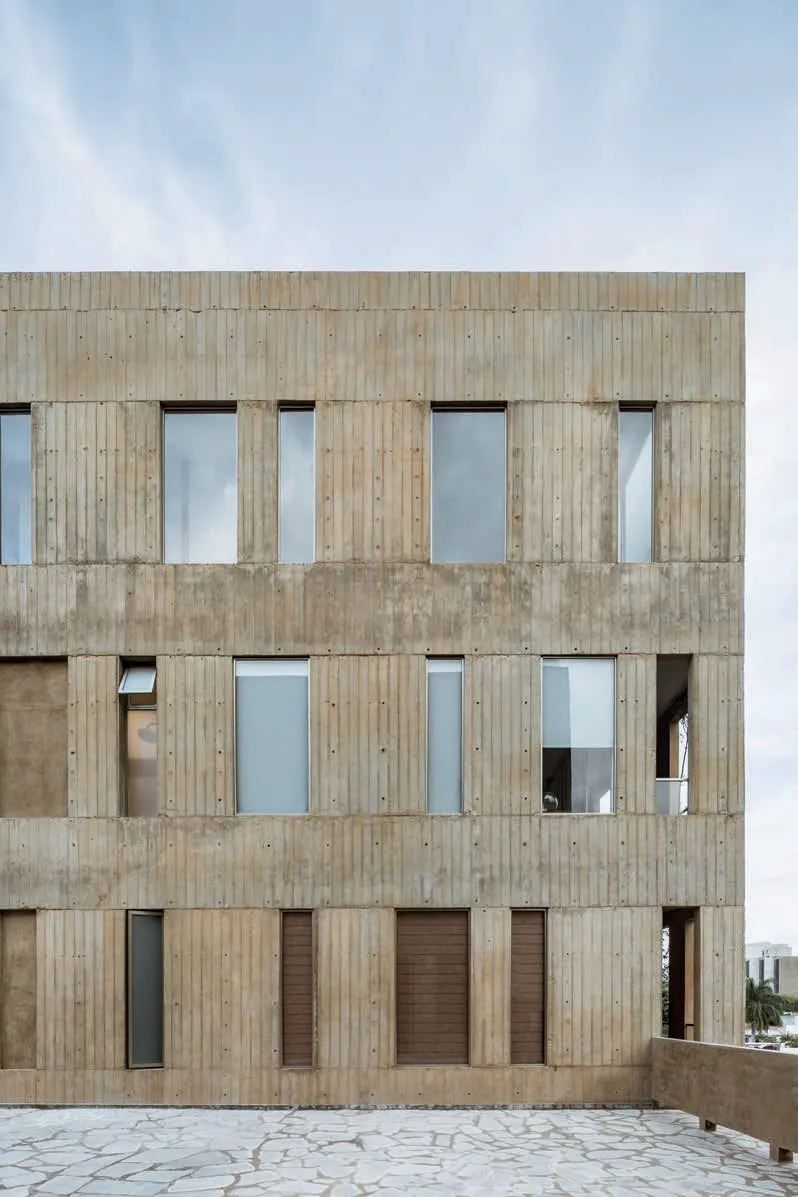
3 外景/Exterior view

4 纵剖面/Longitudinal section
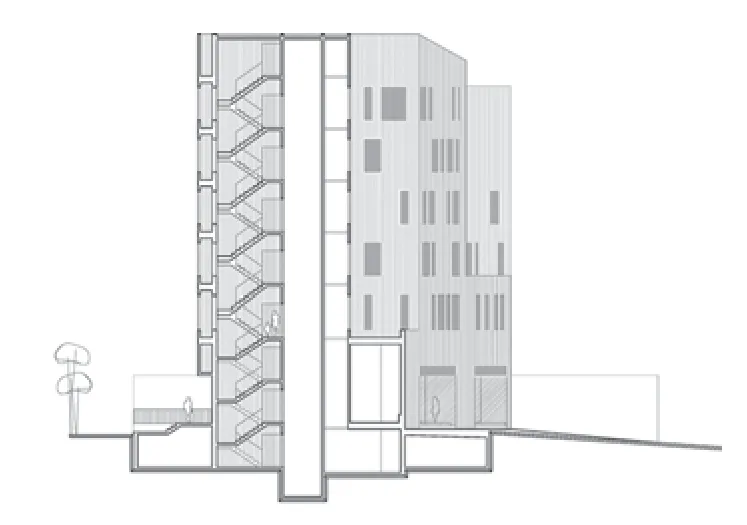
5 横剖面/Transverse section
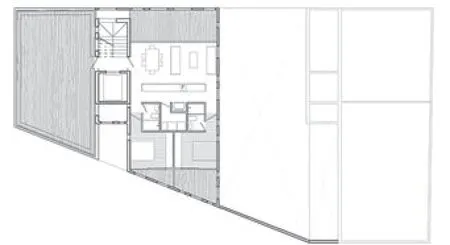
6 六层平面/Level 5 plan
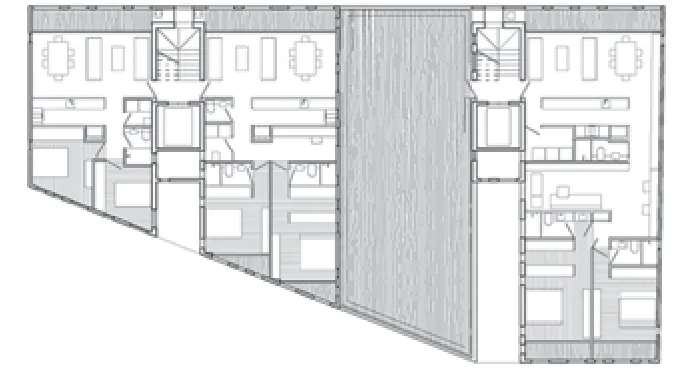
7 四层平面/Level 3 plan
项目信息/Credits and Data
地点/Location: Guadalajara, Jalisco, Mexico
主持建筑师/Principal Architects: Salvador Macías Corona,Magui Peredo Arenas
项目总协调/Project Coordinator: Leonardo Ruíz
项目团队/Project Team: Cristina Serrano, Elizabeth Fernández, Denisse Sandoval, Carlos Mendiola, Ernesto Rizo
结构设计/Structural Design: Juan Jesús Aguirre,CEROMOTION
施工/Construction: Oroplan Constructora
熔炼顶吹炉炉渣的目标渣型是Fe/SiO2比率为1.2,即Fe/Si比率为2.6,Ca/Si比率为0.7。根据熔炼顶吹炉多年的工业生产实践可知,Fe/Si和Ca/Si比率可在一定范围内波动,即Fe/Si=2.1~2.7(氧化阶段Fe/Si=2.5~2.7,烟化阶段Fe/Si=2.1~2.5)、Ca/Si=0.4~0.85(氧化阶段Ca/Si=0.7~0.85,烟化阶段Ca/Si=0.4~0.7),同时引入了硅酸度K来控制炉渣的整体化学性,K=1.0~1.3(氧化阶段K=1.0~1.1,烟化阶段K=1.1~1.3)。
材料及结构/Material and Structure: 混凝土/Concrete
建筑面积/Floor Area: 2200m²
设计开始时间/Design Start Time: 2013
建成时间/Built Time: 2018
项目描述撰文/Project Description: Salvador Macías
摄影/Photos: César Béjar
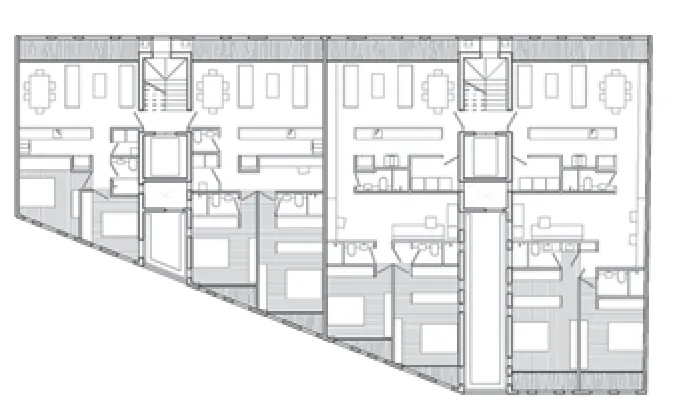
8 二层平面/Level 1 plan

9 夹层平面/Mezzanine floor plan
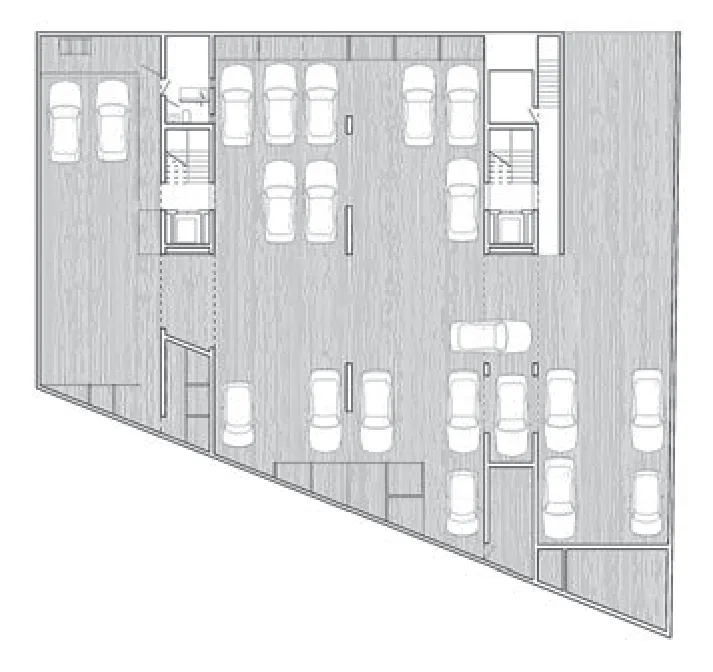
10 地下层平面/Basement plan
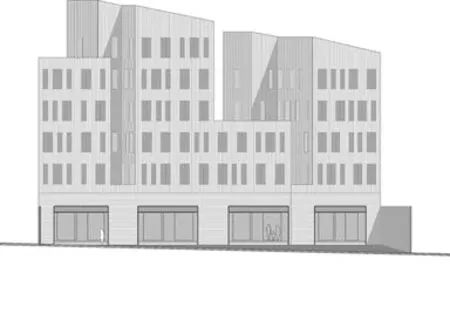
11 立面/Elevation
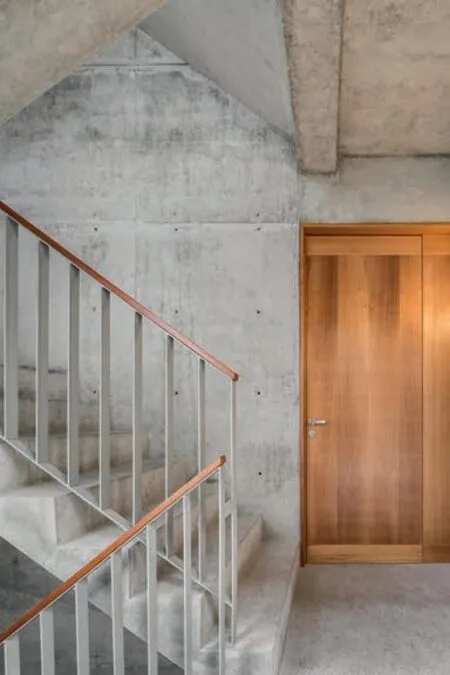
12 楼梯间内景/Interior view of staircases
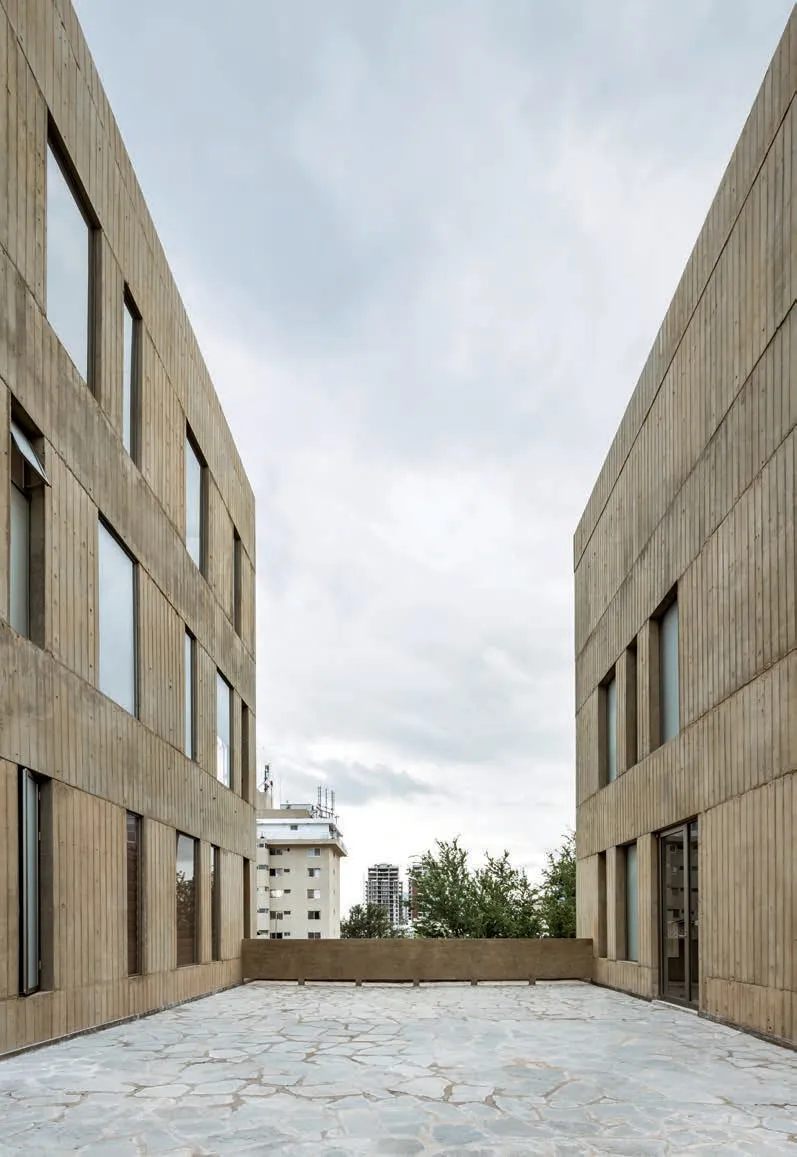
13 外景/Exterior view
评论
裴钊:拉美集合式公寓中的精良之作。在拉美经济通货膨胀和银行贷款高利率影响下,私人企业开发大型住宅项目较少,大量新住宅是这种接近众筹方式的中产公寓:若干中产家庭一起购置一块土地,出资委托建筑师将原先低层独栋建筑改造成中高层公寓,然后每家分得一户新公寓,其中建筑师也承担建造商和开发商的角色。在惨淡的拉美经济下,这种开发模式催生了一批优秀的公寓建筑。从外观上看,均质的混凝土外墙为建筑带来了强烈的体积感,但事实上只是一个表皮,与内部方正的体积间的空隙产生了丰富的层次感。此外,将4个住宅塔楼像“套环”游戏一样,高低参差布置,在保证开发强度不变的条件下,丰富了建筑造型。
范路:冈萨雷斯卢纳住宅大厦的体量呈现为一个被削切单体的形象。形体削切的原因是多重的:引向前方花园的空间渗透,应对两条氛围不同的周边道路,回应两种路网肌理。4个塔楼错落连接2个交通核,以及保证每户通风采光的形体削切。所有这些处理让该公寓楼具有丰富的、变化微妙的表情。然而,不够鲜明的总体立场和4个立面近乎一致的处理,却让建筑在街区中显得有些呆滞。
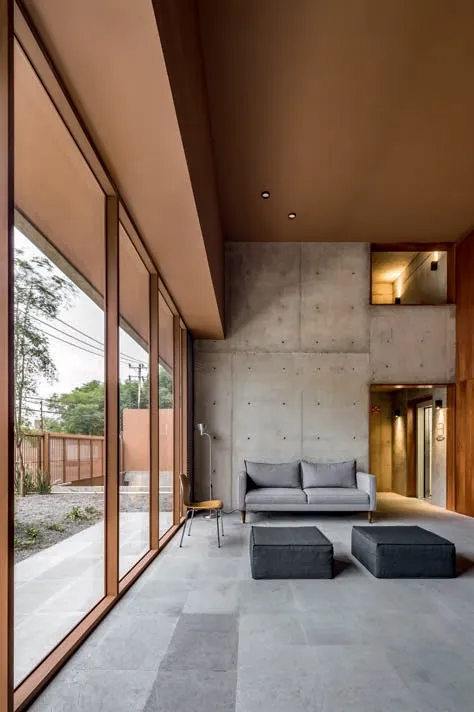
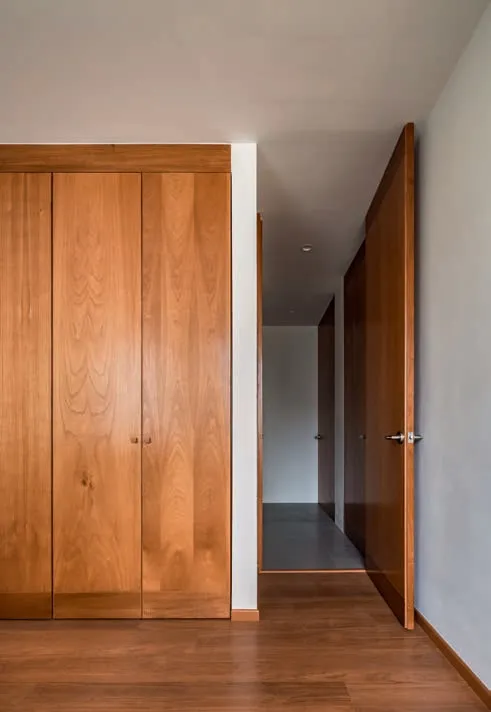
14.15 内景/Interior views
Comments
PEI Zhao: A masterpiece in Latin American apartments. Under the influence of Latin American economic inflation and high bank loan interest rates,private companies have developed fewer large-scale residential projects, and a large number of new dwellings are middle-class apartments by way of something like crowdfunding: several middle-class families purchase a piece of land together, and fund to commission an architect to transform the low-rise single building into a high-rise apartment, and then each family gets a new apartment, during which the architect also takes on the role of builder and developer. Under the dismal Latin American economy, this development model has given birth to a number of excellent apartment buildings. From the appearance, the homogeneous concrete exterior wall brings a strong sense of volume to the building, but in fact it is only a skin, and the gap between the internal and square volume creates a rich sense of layering. In addition, the four residential towers are arranged at different heights like a "loop" game,which enriches the building's shape while ensuring the same development intensity. (Translated by XU Ziyi)
FAN Lu: The volume of the González Luna apartment building is expressed as an image of an excavated monolith. The reasons of volumetric excavation are multiple: to produce void permeable towards the gardens in front, to response to different atmosphere of two surrounding streets, to echo with two different types of road network, to connect four different dwelling towers with two independent circulation cores, and to permit ventilation and natural lighting for all the units. Then the building complex is endowed with protean volumetric gestures. However, the overall design intention is ambiguous and brings about a sense of lifelessness for the building complex.

16 外景/Exterior view
